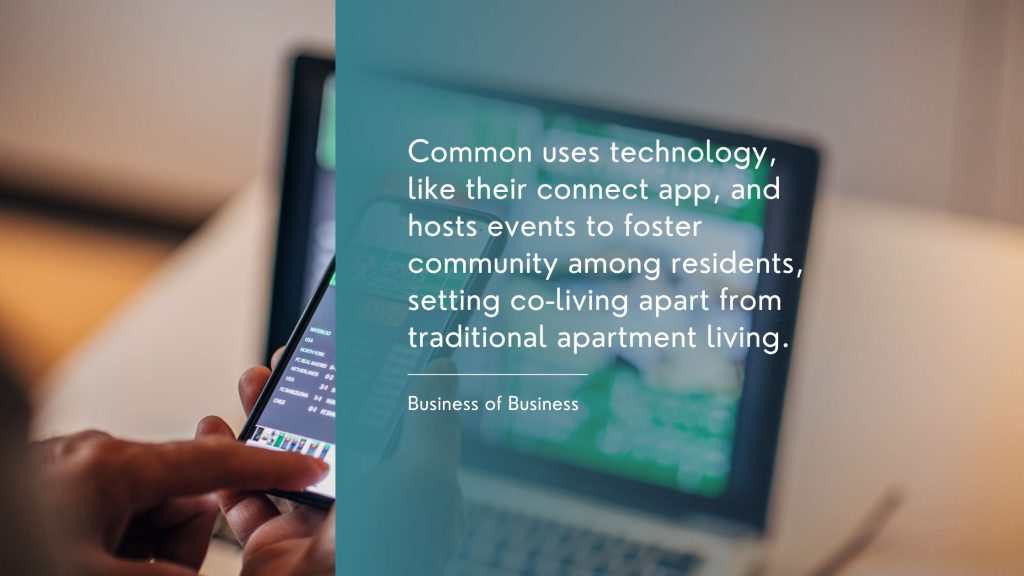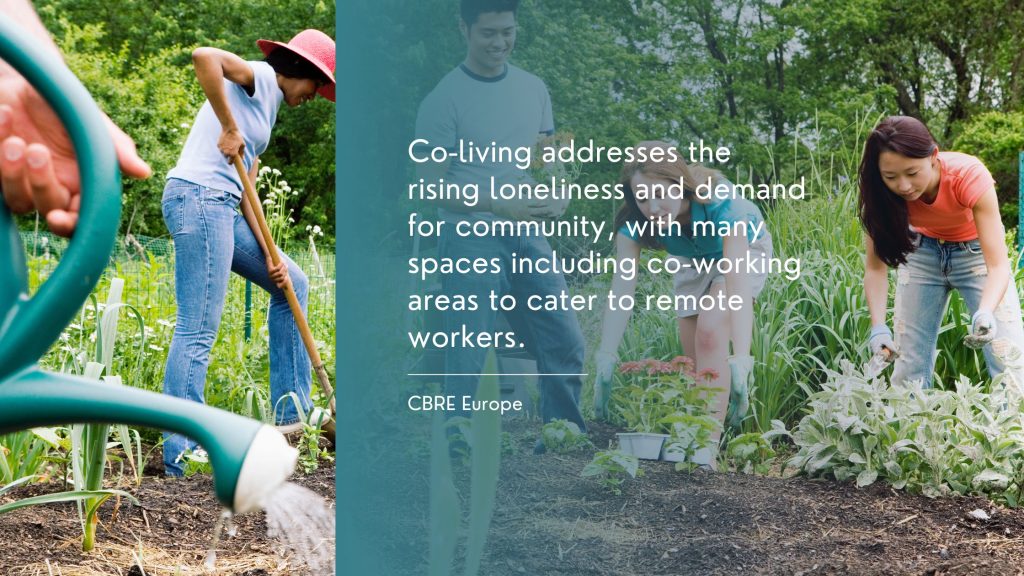In an era where the lines between work, life, and play increasingly blur, co-living emerges as a vibrant living concept that
- Fosters community
- Shared experiences
- Meaningful connections
Co-living spaces offer more than just a place to stay. They provide a sense of belonging and a built-in community for residents from diverse backgrounds.
What is Co-Living?
It is a progressive living model, offering individuals not just shared common spaces like kitchens and lounges but private bedrooms. This blends privacy with community. It emphasises enriched shared experiences. And fosters a strong sense of community. It is highly appealing to
- Digital nomads
- Young professionals
- Those yearning for a more interconnected lifestyle
Co-living is indeed growing in popularity, particularly in the U.S. This trend is supported by investments and is reshaping the student housing market. It does this by offering amenities and shared spaces that cater to modern living preferences .This shift towards more communal living, is found particularly among millennials and Gen Z. Because they value experiences and community over traditional housing norms.
Companies like Gravity Co-living, which cater to this demographic, emphasise the flexibility of their lease agreement. These range from one to twelve months. This caters to the dynamic needs of young professionals who often move between cities.
The Benefits of Co-Living
This model offers numerous benefits, including:
- Reduced living costs
- Built-in social networks
- Opportunities for personal and professional growth
By sharing resources and spaces, residents can enjoy a higher quality of life at a lower cost, all while being part of a supportive and dynamic community.
Common, a co-living space, builds community through technology, like their connect app. And hosts events aimed at fostering connections among residents. This highlights the experiential aspect of co-living that differentiates it from traditional apartment living.

How to Develop Co-Living Spaces
To develop successful co-living spaces that meet the needs of modern urban dwellers and foster a sense of community consider 3 key elements.
Thoughtful Design and Layout
Creating a co-living space starts with thoughtful architectural and interior design that encourages interaction while respecting privacy. This involves planning communal areas that inviting and conducive to socialising, they include:
- Communal dining areas
- Shared workspaces
- Cosy social lounges
- Even vibrant outdoor spaces
At the same time, personal spaces like bedrooms and bathrooms need to be designed to offer comfort and a sense of personal sanctuary. The layout should facilitate natural flow between private and communal areas, ensuring that residents feel connected to the community without compromising their need for personal space.
Community Engagement and Programming
This type of environment thrives on active community engagement. This can be achieved through regular events that cater to the interests and needs of the residents. Consider incorporating a mix of social, educational, and wellness activities. These can include:
- Communal dinners
- Skill-sharing workshops
- Exercise classes
- Networking events
Co-living addresses the rising loneliness and demand for community, with many spaces including co-working areas to cater to remote workers. These initiatives not only bring residents together but also contribute to their personal and professional development. This will strengthen the community bond.

Integrating Technology for Efficiency and Connection
Leveraging technology is essential in modern co-living spaces to streamline operations and enhance the resident experience. Implementing a management system can facilitate efficient booking, communication, and service delivery within the co-living space.
Additionally, digital platforms and apps can be used to foster a sense of community by enabling residents to communicate, share resources, and stay informed about upcoming events and activities.
How Sirvoy Supports Co-Living Spaces
Sirvoy’s suite of features can be invaluable for co-living operators, offering:
- Booking Management: Easily manage room bookings and resident details, ensuring smooth operations and a great resident experience
- Communication Tools: Use Sirvoy’s communication features to keep residents informed about events, updates, and community news, fostering a connected community
- Rate and Inventory Management: Efficiently manage room rates and availability, accommodating both short-term and long-term residents with flexibility
- Payment Processing: Simplify financial transactions with integrated payment processing, making it easy for residents to pay for their stay and additional services
Conclusion
This trend is redefining the concept of home for many. It offers a blend of personal space and community living that caters to the needs of modern residents. With the support of technology like Sirvoy, co-living operators can streamline operations, enhance the resident experience, and cultivate cool, connected communities.




